Cisco's Latest Managed Switch Designed For Non-Techies
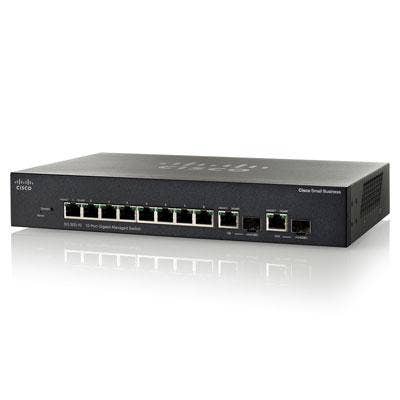
Cisco Managed Switch
Gone are the days when programming a Layer 3 Ethernet switch required special training or certifications. Once a king of complexity, Cisco's now the sultan of simplicity, and takes ease of management to a new level with its SG300-10MP 10-port Gigabit PoE Managed Switch, one of 15 models in its latest 300 Series of Gigabit-speed, IPv6-compatible, Power Over Ethernet switches for the small and medium business.
With prices in the hundreds of dollars, the series offers features once the domain of enterprise-class systems costing thousandsof dollars.
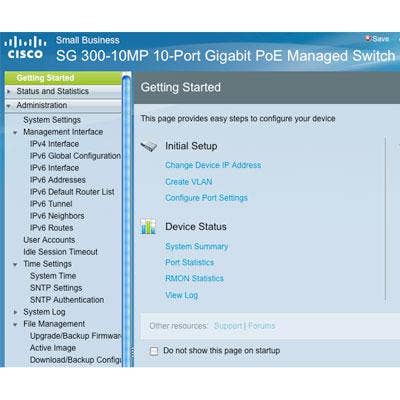
Easy Setup
Cisco's 300 Series managed switches are designed to be maintained by the end-user, people that are usually more interested in processing orders from their small business's Web site than in mucking around with IT technologies and protocols. To simplify switch operations for these reluctant IT pros, Cisco's embedded software presents a "Getting Started" screen by default, grouping routine start-up and maintenance tasks in a single place at every log in. If choosing not to show this screen, the system instead defaults to the System Summary (next slide).
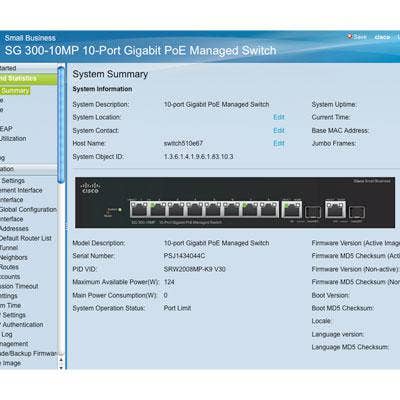
System Summary
Among the first places the troubleshooting service tech will visit will be the System Summary screen, which provides near real-time information about health and status of the 300 Series. An image of the target switch updates about every 20 seconds, and provides hot-links to each of the fixed-purpose and communication option ports. Clicking on an on-screen port permits editing of that port's settings in a new browser window, seen next.
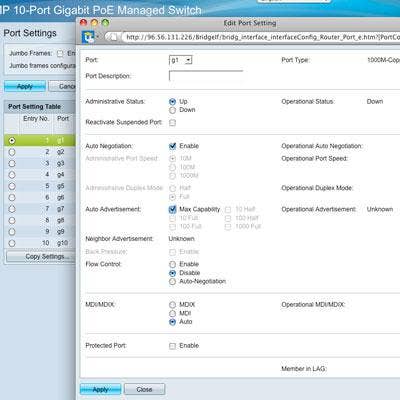
Port Settings
Thanks to some clever HTML coding, port settings of Cisco's 300 Series switches are easy to configure and hard to mess up. Available settings are bold and black; and unavailable ones are a ghostly grey. It's also possible to configure and apply settings to multiple ports from this single screen, and to label individual ports with their purpose, connection or other descriptive text.
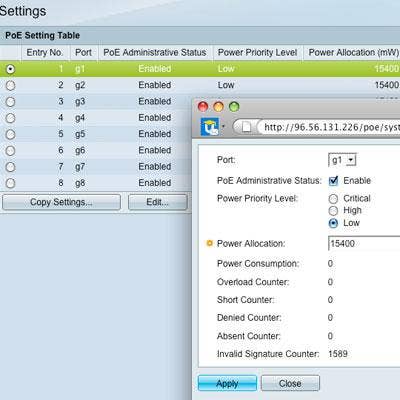
Power Over Ethernet
There's granular access to many of the port settings of 300 Series switches. including those of the Power Over Ethernet injected into each of this unit's eight PoE ports and the ability to assign power priorities. By default, power supplied is 15,400 milliwatts, which is the maximum wattage per-port allowed by the PoE specification. This screen also displays information invaluable when troubleshooting a PoE device, such as power consumption and power overloads.
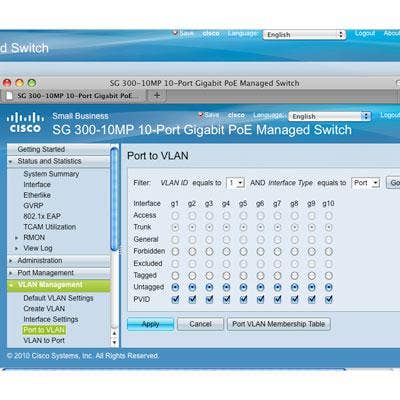
Virtual LANs
Virtual LANs, or VLANs, permit multiple, dispersed networks to reside in a single broadcast domain without being physically connected. A sometimes complex and confusing affair, VLAN setup is simplified with Cisco's Port-to-VLAN and VLAN-to-Port UI pages. With Port-to-VLAN (inset), a VLAN and all its ports (or LAN aggregators) can be configured on a single page; simply select the desired settings and click Apply. To map ports to an existing VLAN, simply use the VLAN-to-Port page.